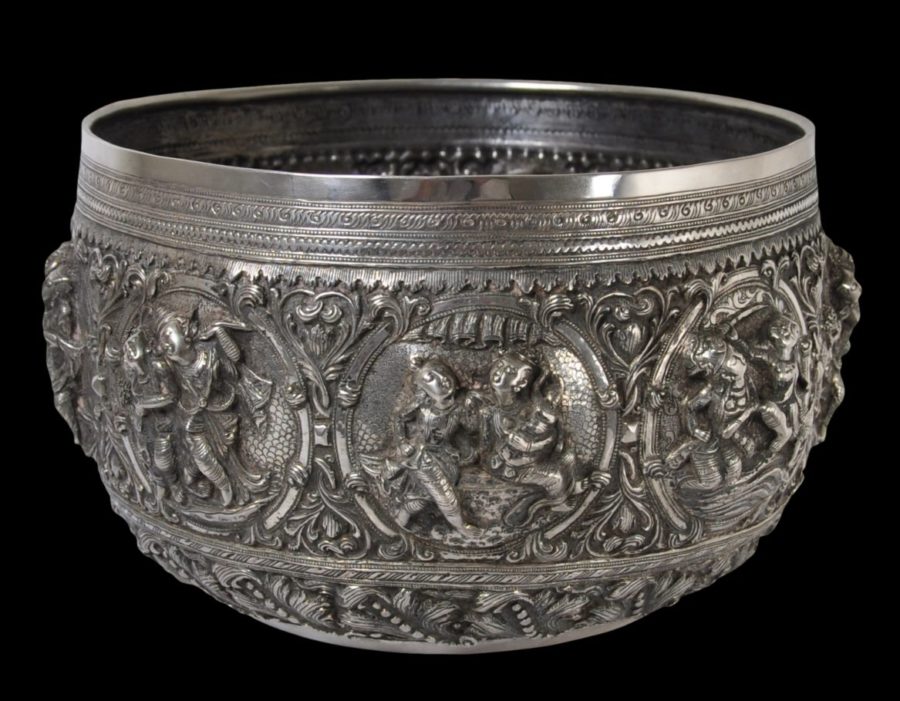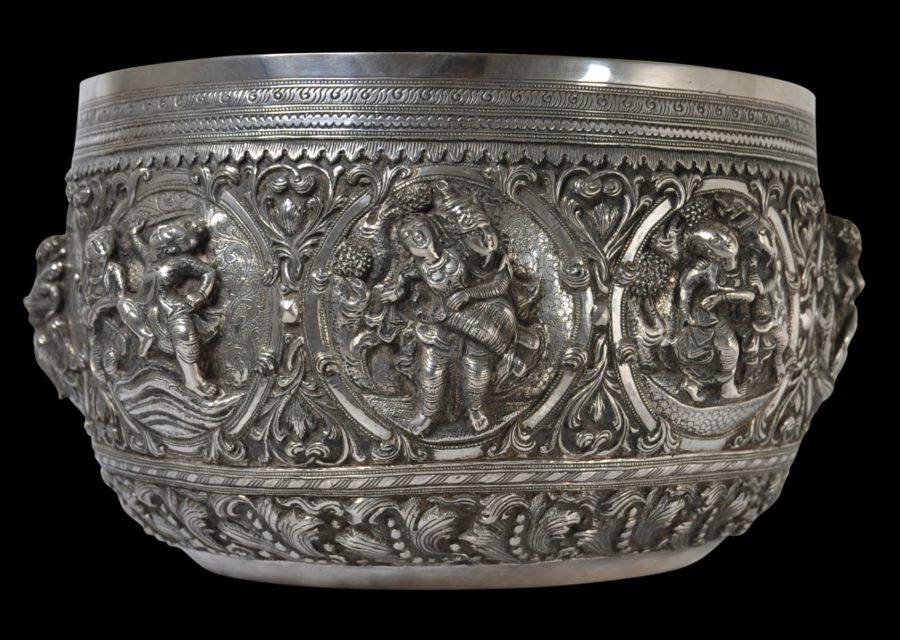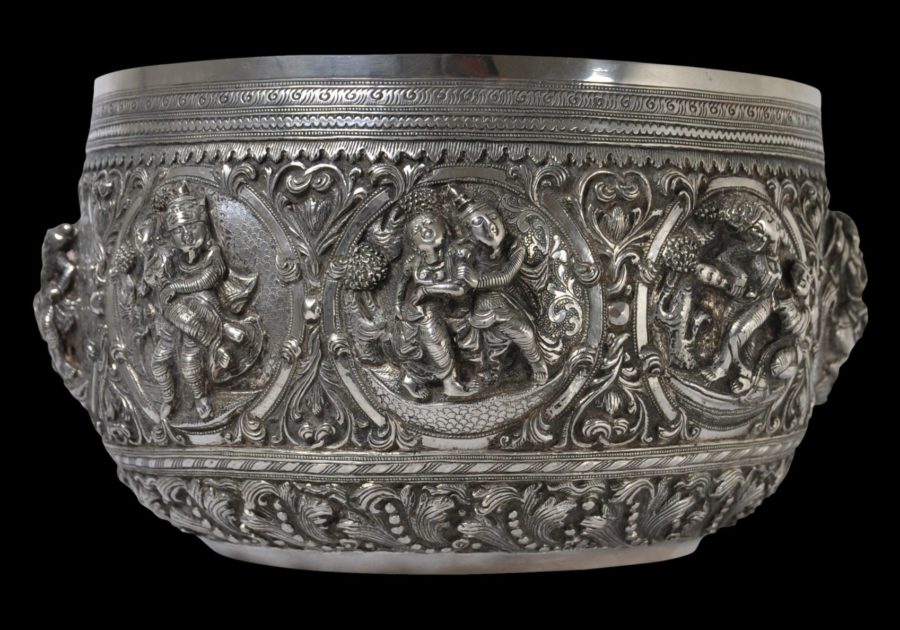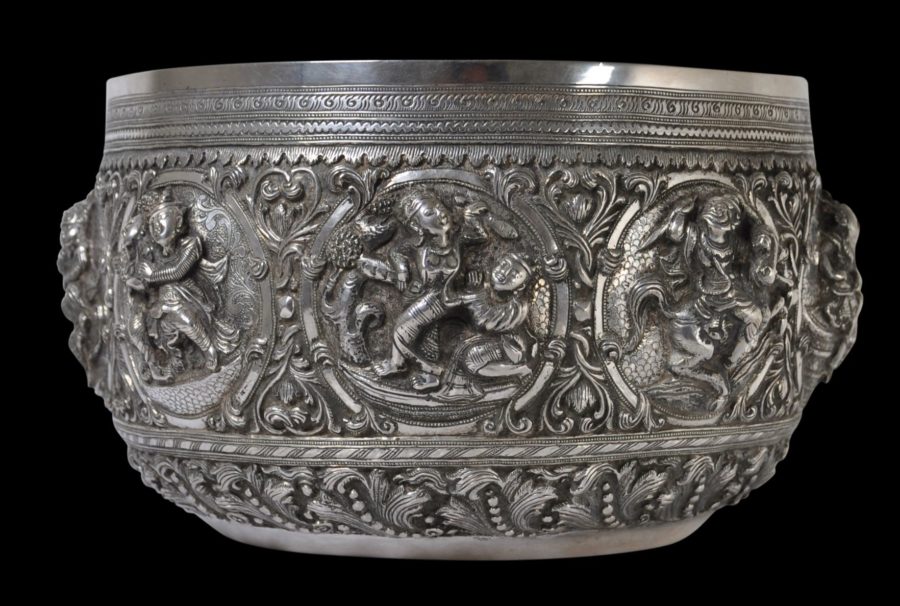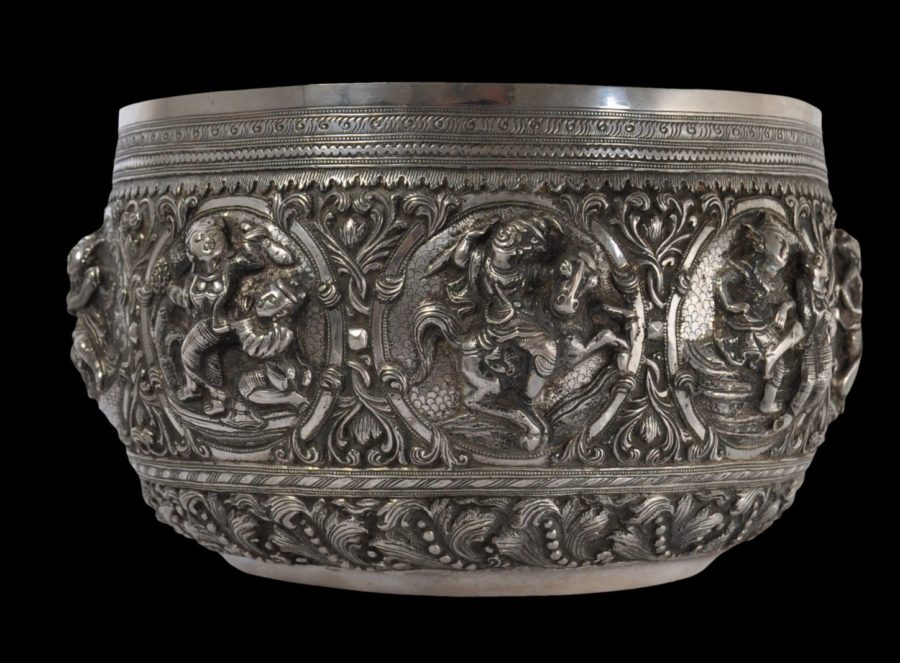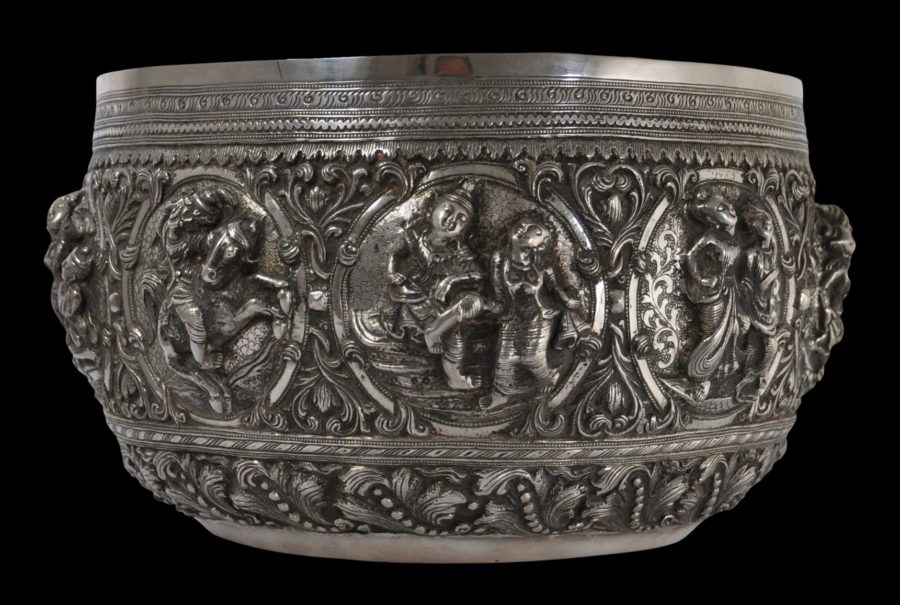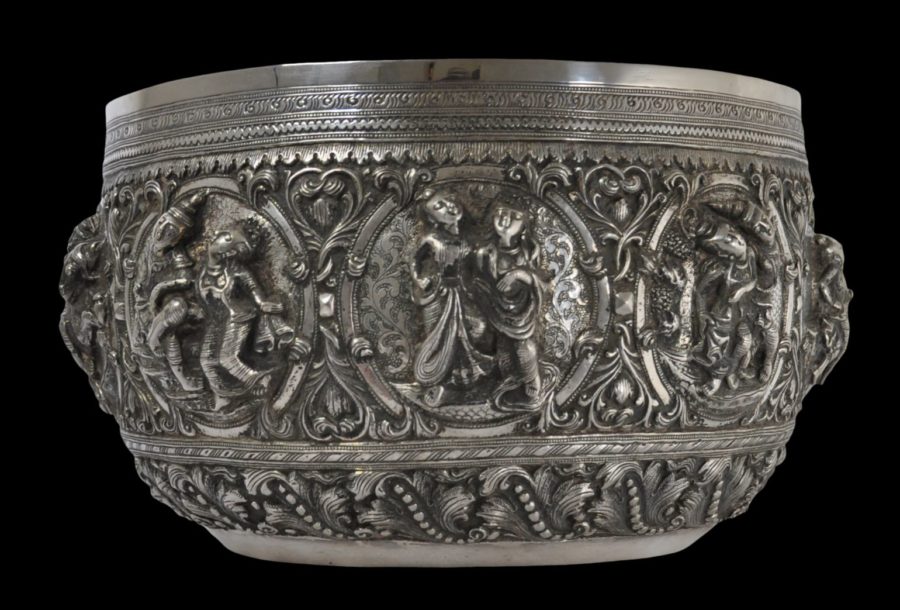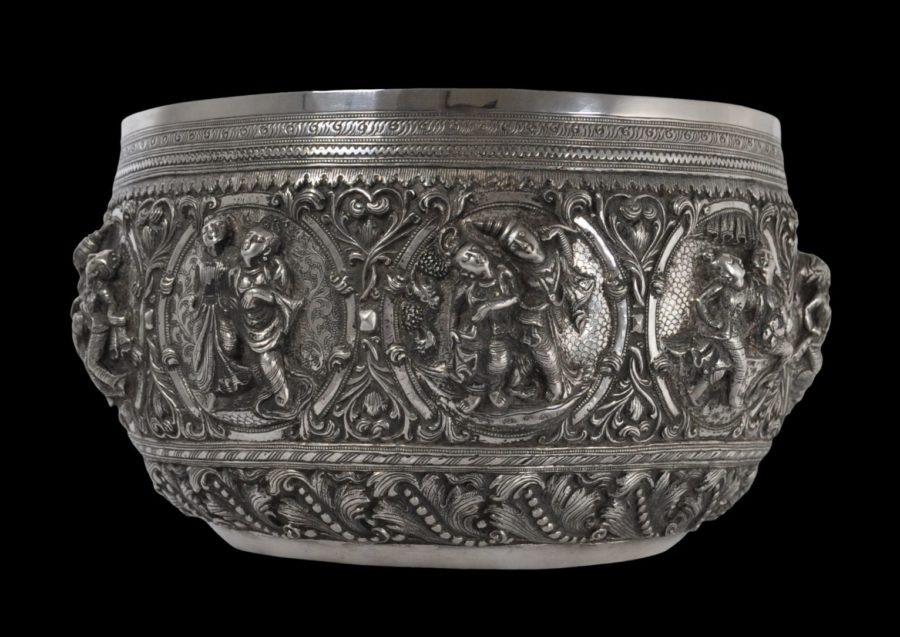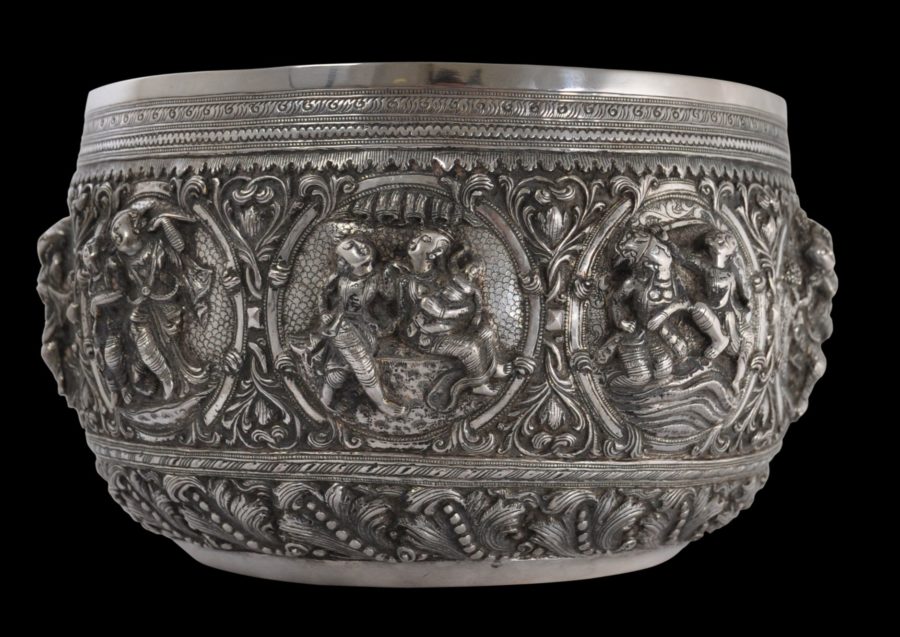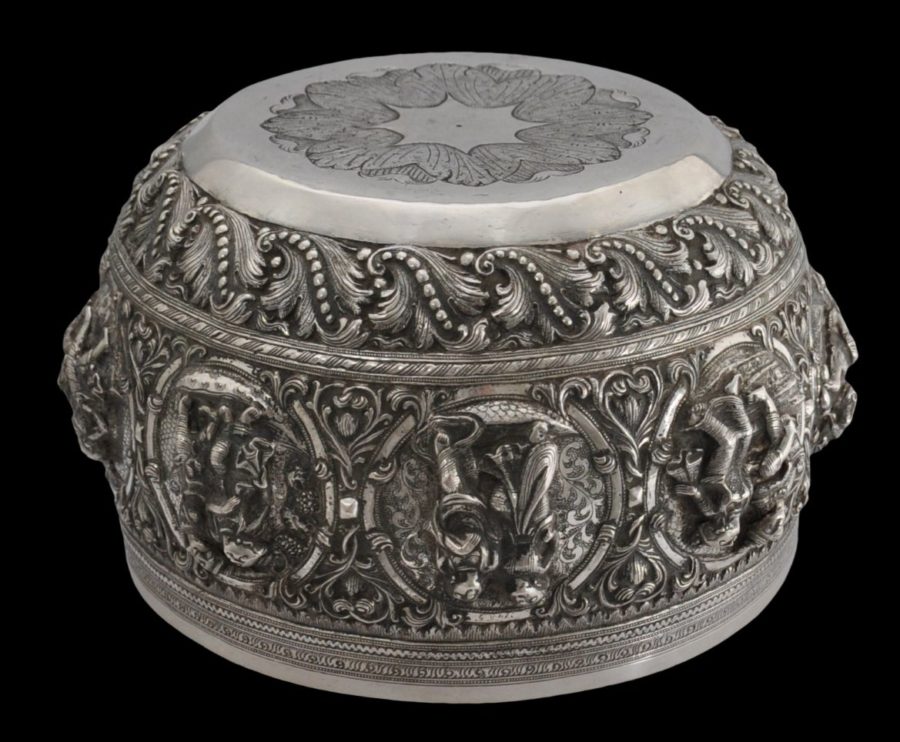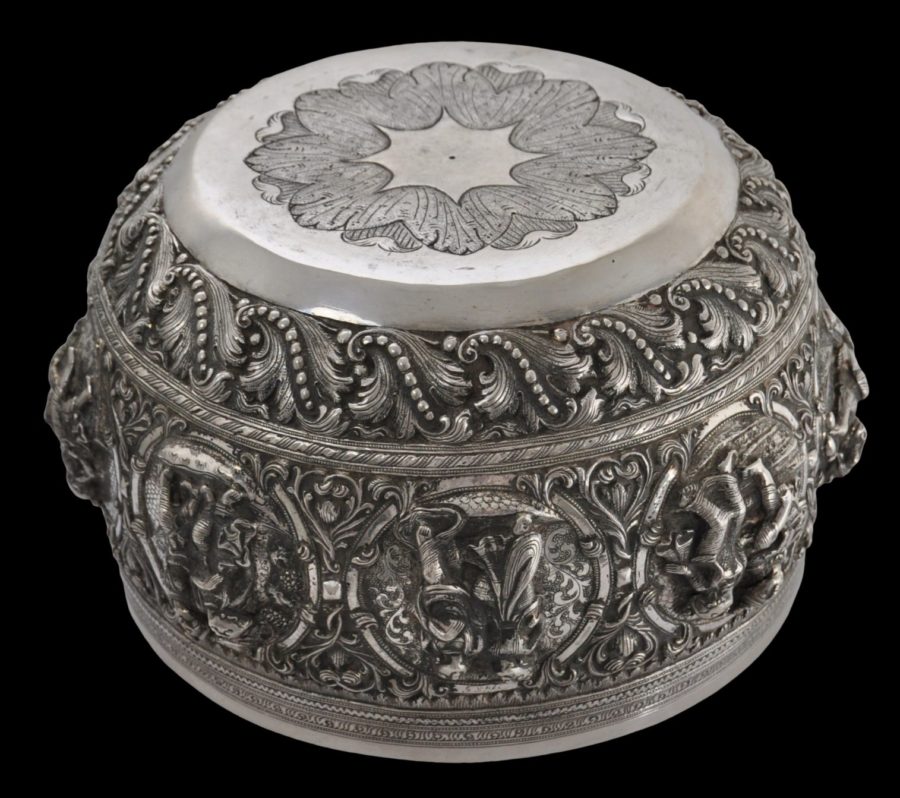This fine and unusual Burmese silver bowl is repoussed in high relief with nine roundels each featuring scenes of what are probably from the Ramayana. These are surrounded by interlaced scrollwork.
The upper border comprises fine bands of scrollwork.
The lower border is very unusual. It comprises a wide band of repeated foliage motif interspersed with an open pea-pod motif.
The base is flat and of hammered silver that has been engraved with a large snowflake-like motif.
The shape of such bowls is based on the monk’s begging bowl, although ironically, Burmese monks are prohibited from touching gold or silver. Accordingly, Burmese silversmiths did not use their skills on religious objects unlike silversmiths in other Buddhist lands such as Tibet or Sri Lanka.
Overall, this bowl is an unusual and fine example of a colonial Burmese bowl. It was acquired in the UK and most probably has been in the UK since the colonial era. It is fine condition, and has obvious age. The repousse work has been extended to the point whereby the bowl has the usual small holes caused by this work. These are not readily apparent unless the bowl is held up to the light.
References
Fraser-Lu, S., Silverware of South-East Asia, Oxford University Press, 1989.
Fraser-Lu, S., Burmese Crafts: Past and Present, Oxford University Press, 1994.
Tilly, H.L., The Silverwork of Burma (with Photographs by P. Klier), The Superintendent, Government Printing, 1902.
Tilly, H.L., Modern Burmese Silverwork (with Photographs by P. Klier), The Superintendent, Government Printing, 1904.


